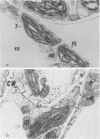Abstract
Pisum sativum L. was exposed to ultraviolet-B (UV-B) radiation (280-315 nm) in greenhouse and controlled environment chambers to examine the effect of this radiation on photosynthetic processes. Net photosynthetic rates of intact leaves were reduced by UV-B irradiation. Stable leaf diffusion resistances indicated that the impairment of photosynthesis did not involve the simple limitation of CO2 diffusion into the leaf. Dark respiration rates were increased by previous exposure to this radiation. Electron transport capacity as indicated by methylviologen reduction was also sensitive to UV-B irradiation. The ability of ascorbate-reduced 2,6-dichlorophenolindophenol to restore much of the electron transport capacity of the UV-B-irradiated plant material suggested that inhibition by this radiation was more closely associated with photosystem II than with photosystem I. Electron micrographs indicated structural damage to chloroplasts as well as other organelles. Plant tissue irradiated for only 15 minutes exhibited dilation of thylakoid membranes of the chloroplast in some cells. Some reduction in Hill reaction activity was also evidenced in these plant materials which had been irradiated for periods as short as 15 minutes.
Full text
PDF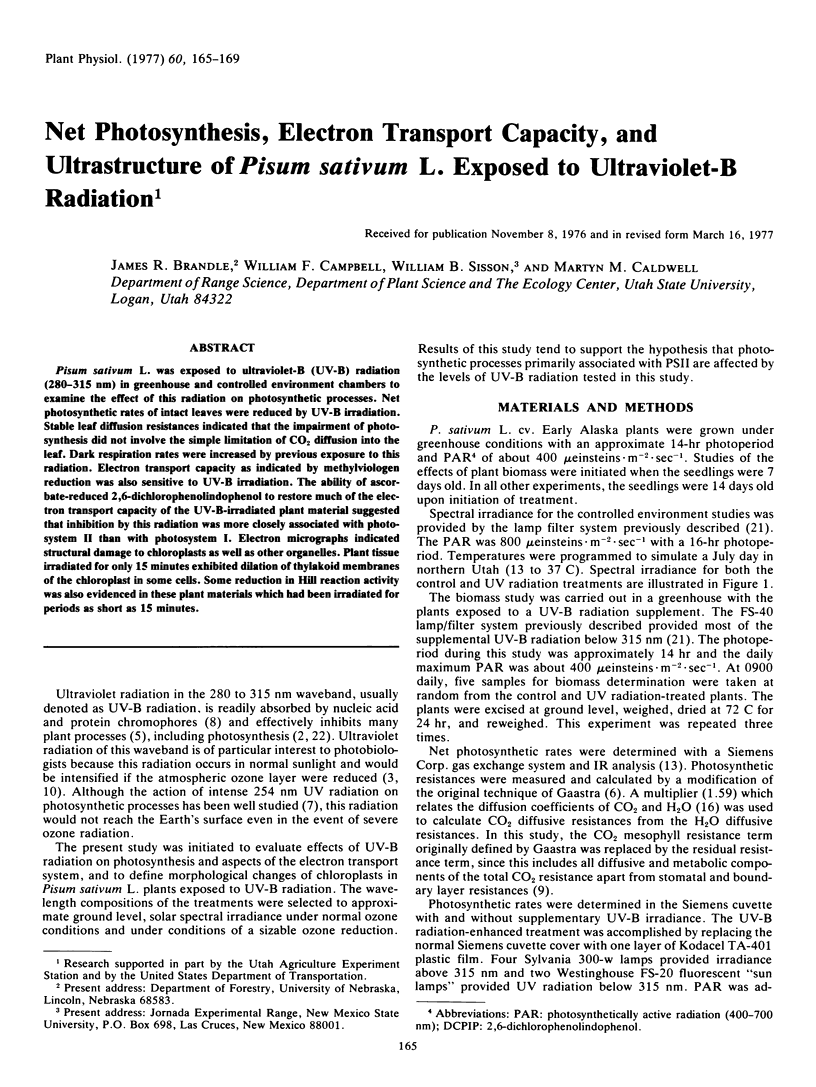
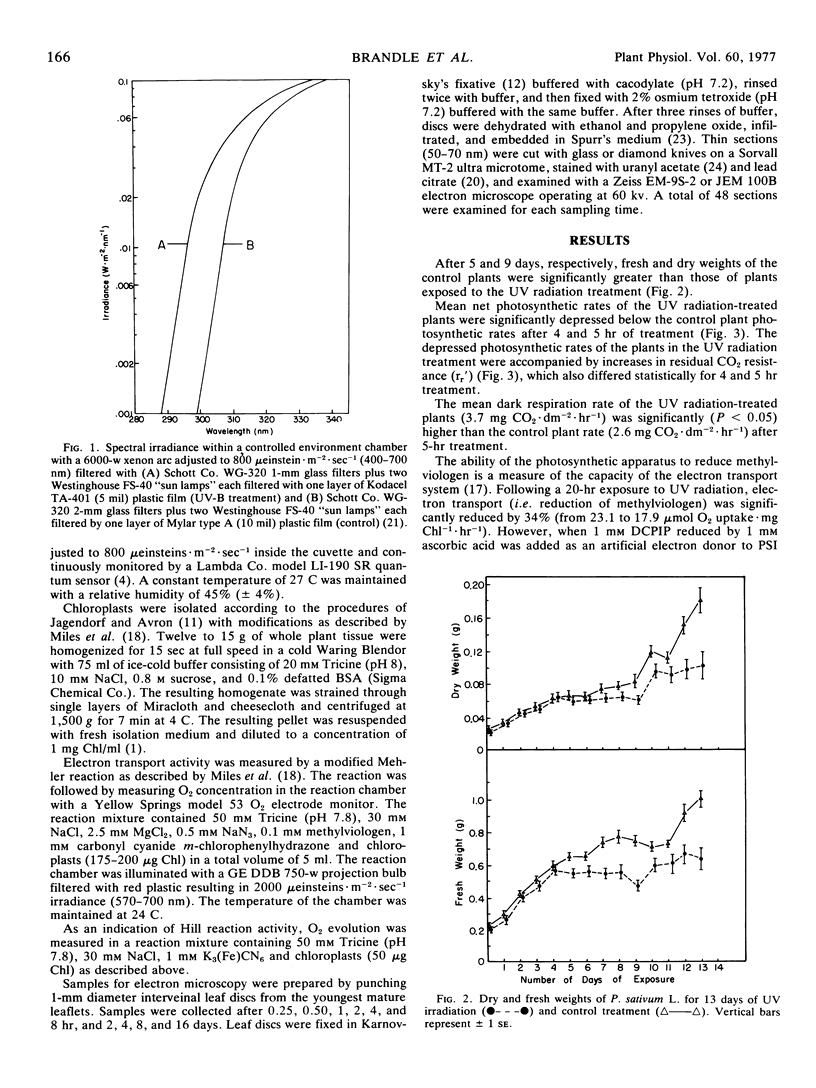
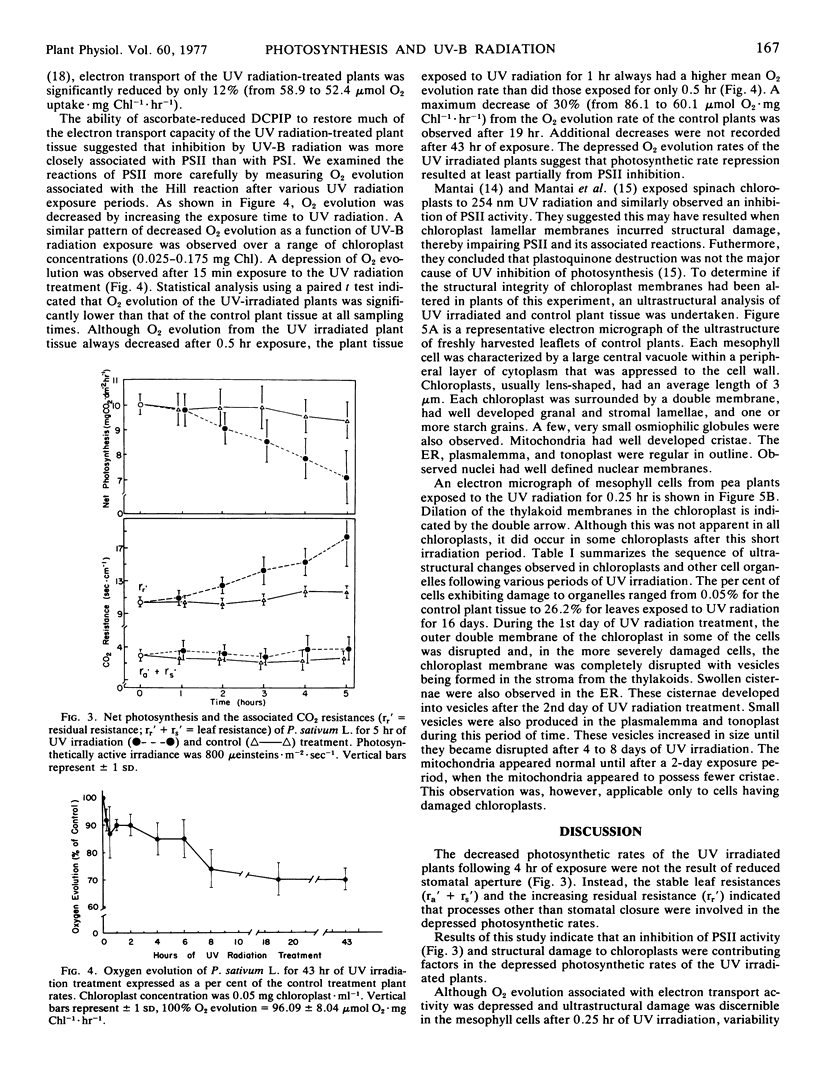
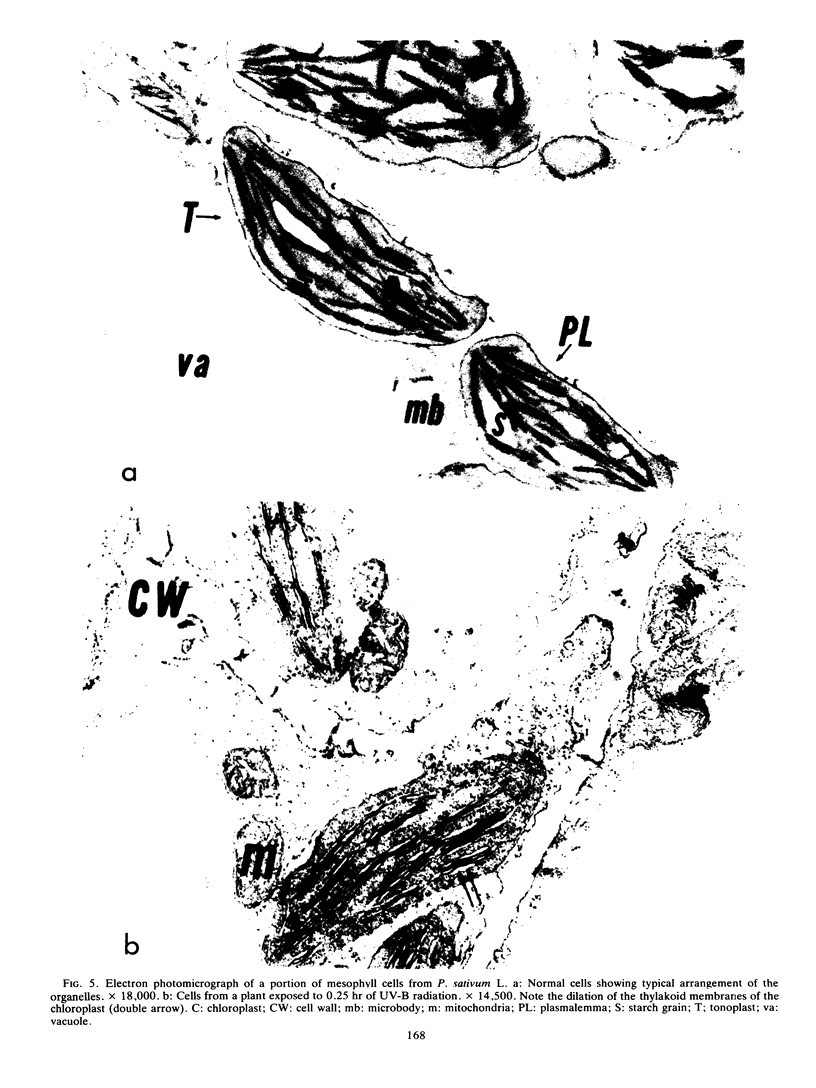
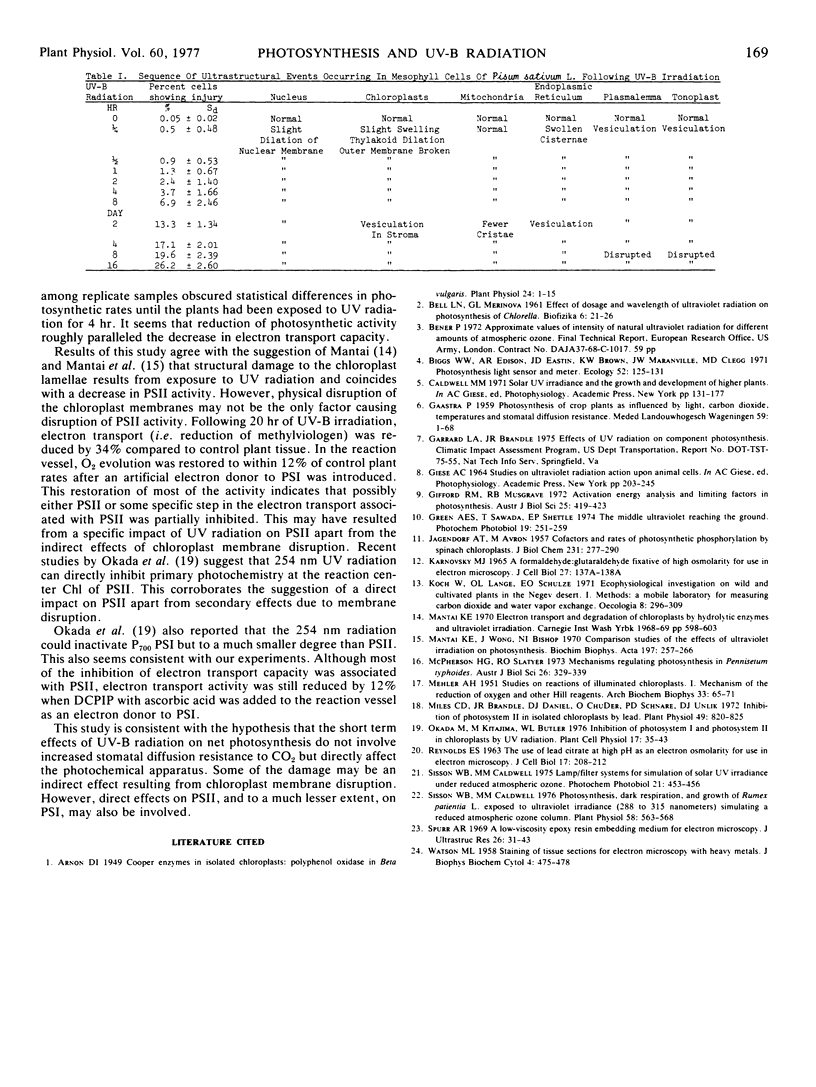
Images in this article
Selected References
These references are in PubMed. This may not be the complete list of references from this article.
- Arnon D. I. COPPER ENZYMES IN ISOLATED CHLOROPLASTS. POLYPHENOLOXIDASE IN BETA VULGARIS. Plant Physiol. 1949 Jan;24(1):1–15. doi: 10.1104/pp.24.1.1. [DOI] [PMC free article] [PubMed] [Google Scholar]
- JAGENDORF A. T., AVRON M. Cofactors and rates of photosynthetic phosphorylation by spinach chloroplasts. J Biol Chem. 1958 Mar;231(1):277–290. [PubMed] [Google Scholar]
- MEHLER A. H. Studies on reactions of illuminated chloroplasts. I. Mechanism of the reduction of oxygen and other Hill reagents. Arch Biochem Biophys. 1951 Aug;33(1):65–77. doi: 10.1016/0003-9861(51)90082-3. [DOI] [PubMed] [Google Scholar]
- Mantai K. E., Wong J., Bishop N. I. Comparison studies on the effects of ultraviolet irradiation on photosynthesis. Biochim Biophys Acta. 1970 Mar 3;197(2):257–266. doi: 10.1016/0005-2728(70)90036-8. [DOI] [PubMed] [Google Scholar]
- Miles C. D., Brandle J. R., Daniel D. J., Chu-Der O., Schnare P. D., Uhlik D. J. Inhibition of Photosystem II in Isolated Chloroplasts by Lead. Plant Physiol. 1972 May;49(5):820–825. doi: 10.1104/pp.49.5.820. [DOI] [PMC free article] [PubMed] [Google Scholar]
- REYNOLDS E. S. The use of lead citrate at high pH as an electron-opaque stain in electron microscopy. J Cell Biol. 1963 Apr;17:208–212. doi: 10.1083/jcb.17.1.208. [DOI] [PMC free article] [PubMed] [Google Scholar]
- Sisson W. B., Caldwell M. M. Photosynthesis, Dark Respiration, and Growth of Rumex patientia L. Exposed to Ultraviolet Irradiance (288 to 315 Nanometers) Simulating a Reduced Atmospheric Ozone Column. Plant Physiol. 1976 Oct;58(4):563–568. doi: 10.1104/pp.58.4.563. [DOI] [PMC free article] [PubMed] [Google Scholar]
- Spurr A. R. A low-viscosity epoxy resin embedding medium for electron microscopy. J Ultrastruct Res. 1969 Jan;26(1):31–43. doi: 10.1016/s0022-5320(69)90033-1. [DOI] [PubMed] [Google Scholar]
- WATSON M. L. Staining of tissue sections for electron microscopy with heavy metals. J Biophys Biochem Cytol. 1958 Jul 25;4(4):475–478. doi: 10.1083/jcb.4.4.475. [DOI] [PMC free article] [PubMed] [Google Scholar]



